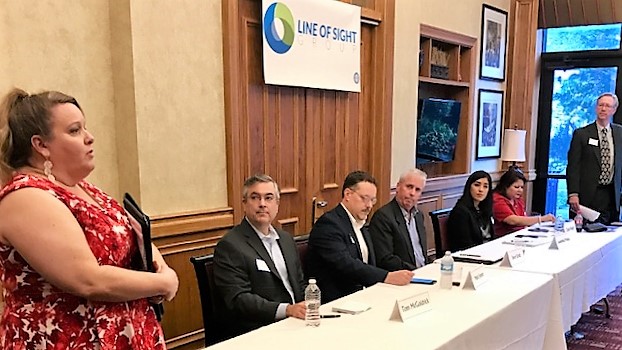In my observation over the years in leading market research and intelligence efforts within organizations and then supporting them in a consulting role, I’ve observed how organizations tend to migrate along a ‘continuum’, based on their experience and skills in making data-driven strategic decisions.
Phase 1: Surprise! The initial realization that organizations need better knowledge and understanding of their external and competitive environment is when management experiences a significant surprise. This can be the appearance of a new competitor in their space, maybe through a partnership or acquisition. An example is the recent entry of Amazon into the grocery business through the acquisition of Whole Foods. Or it might be the loss of business at a loyal customer to an ‘irrational’ competitor, or simply growing price pressure caused by a value proposition that customers increasingly cannot discern as different from the competition. Whatever the cause, the general response in Phase 1 is to go overboard and ‘boil the ocean’ in an all-out/in-depth analysis to ensure it never happens again. Unfortunately, within months of completing this time consuming and expensive analysis, the external environment has continued to change bringing new potential surprises.

Phase 2. Dedicated Projects. The next phase on the continuum involves the realization that information and knowledge about a firm’s external environment can help manage risk and improve chances of success in its strategic ‘bets’. So instead of relying on gut feel, the organization conducts in-depth research to support and inform a strategic decision, usually related to combating a threat or taking advantage of a specific opportunity. These are one-time efforts designed to support a specific decision. In that way, they are highly valuable and actionable, and many organizations choose to stay in this phase. Again, the primary disadvantage with this approach is that the external environment does not stop evolving and changing. While the ‘snapshot’ analysis is valuable in supporting a specific decision, it gradually becomes obsolete as the environment changes.
Phase 3. Longitudinal Projects. After organizations have been conducting one-off research efforts for a while, they often identify some that they would like to repeat periodically. They may involve ongoing marketing or sales campaigns, for example, or existing products where pricing, features and enhancements change regularly. These periodic updates help managers keep a pulse on the changing external landscape, and make adjustments based on changing customer needs, competitor moves or changes in market or industry-level forces that affect strategic decisions. The primary disadvantage is that these updates generally look backward and decisions are based on what has happened rather than being future-based to include what is likely to happen.
Phase 4: Systematic Intelligence. As organizations see value in periodic updates, some move further to a systematic environment that involves continuous monitoring of threats and opportunities, regular updates, and an ongoing development of a strategic knowledge asset that is leveraged across the organization. Ongoing monitoring of leading indicators and patterns of changes in products and offerings, strategic assumptions, potential opportunities, threats and disruptors, and customer perception of the firm’s value proposition are designed to enable the organization to identify threats and opportunities earlier and to adjust its strategy quickly and effectively.
In order to get to this point, managers in these organizations start to develop a different mindset and an understanding that they cannot control how customers and ‘irrational’ competitors will behave in the future. They acknowledge that strategy is not perfect. They realize that, while their annual strategic plan is valuable for creating initial budgets and a list of important initiatives, they also need to have the capability and discipline to make strategic changes mid-stream and be able to justify them to the board using data. Managers shift their thinking to focus on the risks involved in the strategic choices (i.e.: placing bets) rather than insisting on proof that a given strategy will succeed.
This journey along the sophistication curve from episodic fixes to a data-driven culture of continuous knowledge and insight can be difficult for many organizations, but I’ve observed that those that make it to the systematic program level find a number of benefits:
- Faster strategic response and first-mover advantages
- Improved efficiency through a continuous process
- Better communication and ‘line of sight’ for middle managers and others who support and execute strategic decisions
- A knowledge asset that can be built upon and leveraged for innovation across the organization
In general, these organizations become more proactive by developing the capabilities to make hard strategic choices and ‘bets’ even as some things are unknowable and uncontrollable, and to adjust their strategies based on their own continuous learning about their external environment.










